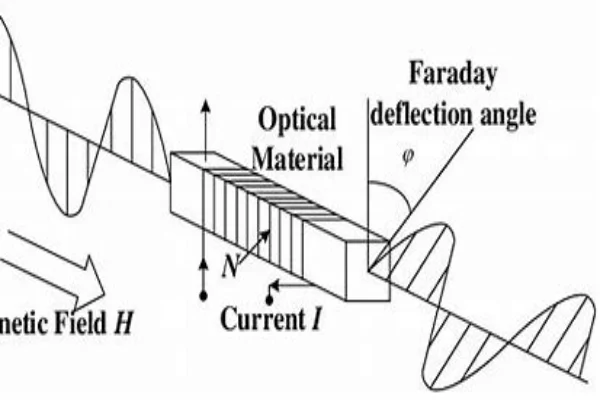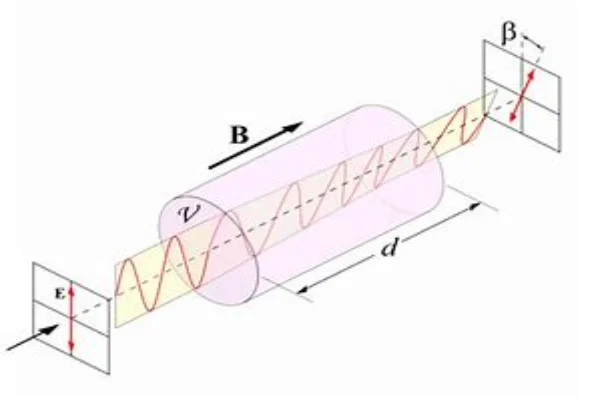Introduction to the Faraday Effect
Firstly, we will delve into the basics of the Faraday effect. Named after the scientist Michael Faraday, this phenomenon describes how a magnetic field can manipulate the polarization of light, leading to what we know as magneto-optic effects.
Understanding Magneto-Optic Crystals
Magneto-optic crystals are paramount in the process of tuning the Faraday effect. They possess unique properties that enable them to interact effectively with light and magnetic fields, making them highly desirable in a range of technological applications.
The Properties of Magneto-Optic Crystals
A critical aspect of these crystals lies in their inherent characteristics. Their strong magnetic dichroism and magnetic birefringence induce rotation in the plane of polarization, which is what gives rise to the Faraday effect.
Types of Magneto-Optic Crystals
There are multiple types of magneto-optic crystals used today, each with its own distinct attributes. Among these, Terbium Gallium Garnet (TGG) and Yttrium Iron Garnet (YIG) are the most common. They both offer superior Faraday rotation and a low absorption coefficient.

The Mechanism of the Faraday Effect in Magneto-Optic Crystals
The Influence of Natural Optical Activity on the Faraday Effect
Natural optical activity is a phenomenon that is seen in some crystals and molecules, where the polarization of light can be rotated as it travels through the substance. The degree of rotation can depend on the thickness of the substance, the wavelength of the light, and the substance’s specific rotation. This natural optical activity plays a pivotal role in the Faraday effect, with magneto-optic crystals leveraging this intrinsic property to enable the rotation of the plane of polarized light.
In magneto-optic crystals, natural optical activity occurs due to the presence of chiral molecules or non-centrosymmetric crystal structures. This structural characteristic means that the molecules or crystal structures don’t have an internal plane of symmetry. It results in an asymmetrical distribution of electronic clouds, creating an environment where light polarization can be influenced.

The Impact of Magnetic Circular Birefringence on the Faraday Effect
Magnetic circular birefringence, on the other hand, refers to the difference in refractive indices for left-handed and right-handed circularly polarized light in the presence of a magnetic field. It’s this difference that is responsible for the rotation of the plane of polarization, a key feature of the Faraday effect.
When a magnetic field is applied to a magneto-optic crystal, the electrons in the crystal orbit under the influence of the field. This causes a shift in their energy levels, creating a difference in absorption for the right-handed and left-handed circularly polarized light. Consequently, this leads to the rotation of the plane of polarization.
The Interplay between Natural Optical Activity and Magnetic Circular Birefringence
The interplay between natural optical activity and magnetic circular birefringence in magneto-optic crystals is what enables the fine-tuning of the Faraday effect. While the natural optical activity provides the initial environment for polarization rotation, the magnetic circular birefringence allows for the external control of this rotation with the application of a magnetic field.
This interaction between light and magnetic fields is critical in many technological applications. For instance, it allows for the design of optical isolators in telecommunication devices, where the rotation of the plane of polarization ensures that light travels in only one direction, maintaining signal integrity.
Similarly, in laser technology, the ability to control the direction and polarization of light is critical in ensuring efficiency and safety. By leveraging the Faraday effect, laser systems can prevent back-reflections that can harm the laser source.

The Significance of Magneto-Optic Crystals in Various Optical Devices
Magneto-optic crystals are a linchpin in the realm of optical devices, their unique properties enabling a diverse range of applications. The ability of these crystals to manipulate the polarization of light under a magnetic field proves invaluable across numerous technological sectors.
Influence in Telecommunication
In telecommunications, one of the primary applications of magneto-optic crystals is in optical isolators. An optical isolator permits light to travel in one direction only, maintaining the integrity of the signal and preventing feedback that might interfere with the source. This unidirectional flow of light is facilitated by the Faraday effect, which is enabled by the use of magneto-optic crystals.
Role in Laser Technology
In laser technology, magneto-optic crystals play a crucial role in Faraday rotators and isolators. These components protect the laser source from potential damage due to back-reflected light. By utilizing the Faraday effect, the direction of light propagation is controlled, enhancing the efficiency and safety of laser systems.
Application in Data Storage
In the field of data storage, magneto-optic technology presents a robust solution for recording and retrieving data. Magneto-optic drives, for example, leverage the properties of these crystals to write data using a laser and magnetic field. The crystals allow for high-density storage, making this technology attractive for applications requiring significant data storage capacity.

Use in Optical Switching
Magneto-optic crystals are also making their mark in the field of optical switching. In devices such as optical routers and switches, the use of these crystals can enable faster, more efficient signal routing. The light’s polarization can be controlled using a magnetic field, allowing for the switching of signals without the need for electrical conversion.
Applications of Magneto-Optic Crystals in Tuning the Faraday Effect
Harnessing the Faraday effect through magneto-optic crystals has led to numerous advancements in the field of optics. From telecommunication devices to laser technology, the influence of these crystals is quite extensive.
Telecommunication Devices
In the realm of telecommunications, magneto-optic crystals play a key role in optical isolators, devices that allow light to travel in one direction only. This helps maintain the integrity of the signal, resulting in clear and precise communication.
Laser Technology
Magneto-optic crystals are also essential in laser technology, specifically in Faraday rotators and isolators. They ensure that the light travels along the desired path, thereby enhancing the efficiency and safety of the laser systems.
Future Prospects of Magneto-Optic Crystals and the Faraday Effect
The influence of magneto-optic crystals on the Faraday effect is likely to extend further into the future. The ongoing research in this domain promises breakthroughs that could revolutionize our understanding of light and magnetic fields.
Quantum Computing and Information Processing
Quantum computing is an emerging field where magneto-optic crystals could have significant implications. The unique properties of these crystals, particularly their interaction with light under a magnetic field, could be harnessed for quantum information processing. In these systems, the states of quantum bits (qubits) could be manipulated using the Faraday effect. As we continue to explore quantum computing’s potentials, magneto-optic crystals’ ability to control and manipulate light properties could be a game-changer in this industry.
Advancements in Telecommunication
In the telecommunications sector, the ever-increasing demand for faster and more reliable communication systems continually drives research into light and magnetic field interactions. Enhancements in magneto-optic crystals could potentially pave the way for the next generation of telecommunication systems, offering increased data transmission rates and better signal integrity. Moreover, advancements in these crystals could enable more efficient optical isolators, reducing signal loss and improving overall system performance.

Improvements in Medical Diagnostics
In the field of medical diagnostics, magneto-optic crystals offer the potential for non-invasive, high-resolution imaging. Research is underway to further improve the imaging quality and resolution using the Faraday effect. As we move forward, these advancements could lead to more accurate diagnoses and a better understanding of biological processes at a cellular level.
Evolution of Data Storage Solutions
As our data storage needs continue to grow, magneto-optic technology offers a scalable solution that can meet these increasing demands. The research into improving the data writing and reading mechanisms in magneto-optic drives could potentially lead to significantly increased storage capacities, faster data retrieval, and more reliable storage solutions.
Conclusion
In summary, magneto-optic crystals hold the key to harnessing and fine-tuning the Faraday effect. The interplay between light and magnetic fields within these crystals opens up an array of possibilities in optical technologies. The potential applications and future advancements only heighten the intrigue and importance of this fascinating field.
Frequently Asked Questions
- What is the Faraday effect?
The Faraday effect is a phenomenon where the polarization of light can be altered using a magnetic field. This is also known as a magneto-optic effect. - What are magneto-optic crystals?
Magneto-optic crystals are materials with unique properties that enable them to interact with light and magnetic fields. These properties make them suitable for tuning the Faraday effect. - How do magneto-optic crystals influence the Faraday effect?
Magneto-optic crystals allow for the rotation of the plane of polarization, which is the key aspect of the Faraday effect. This happens due to their magnetic dichroism and magnetic birefringence. - Where are magneto-optic crystals used?
Magneto-optic crystals are predominantly used in telecommunications and laser technology. They play a crucial role in optical isolators and in ensuring that light travels along the desired path in laser systems. - What is the future of magneto-optic crystals and the Faraday effect?
The field is ripe for innovation, with ongoing research promising new breakthroughs. The application of magneto-optic crystals in tuning the Faraday effect has immense potential to revolutionize optical technologies.

Frank
Frank graduated from the University of Shanghai for Science and Technology, majoring in optics. As a technical engineer at Crylink Company, he deeply understands crystal materials and laser components.
Related Video(s) with this Article
Related Product(s) with this Article
Related Application(s) with this Article
